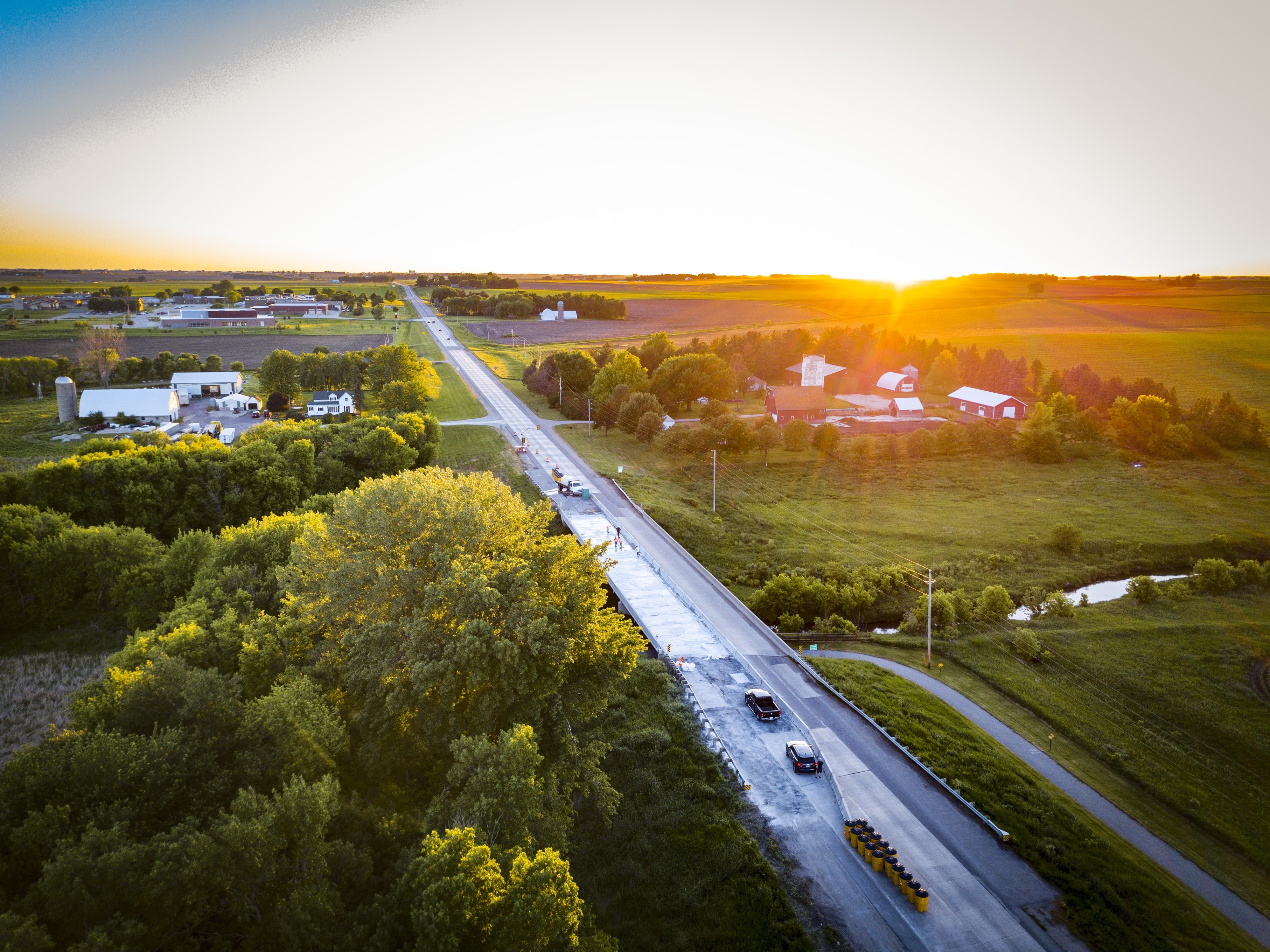
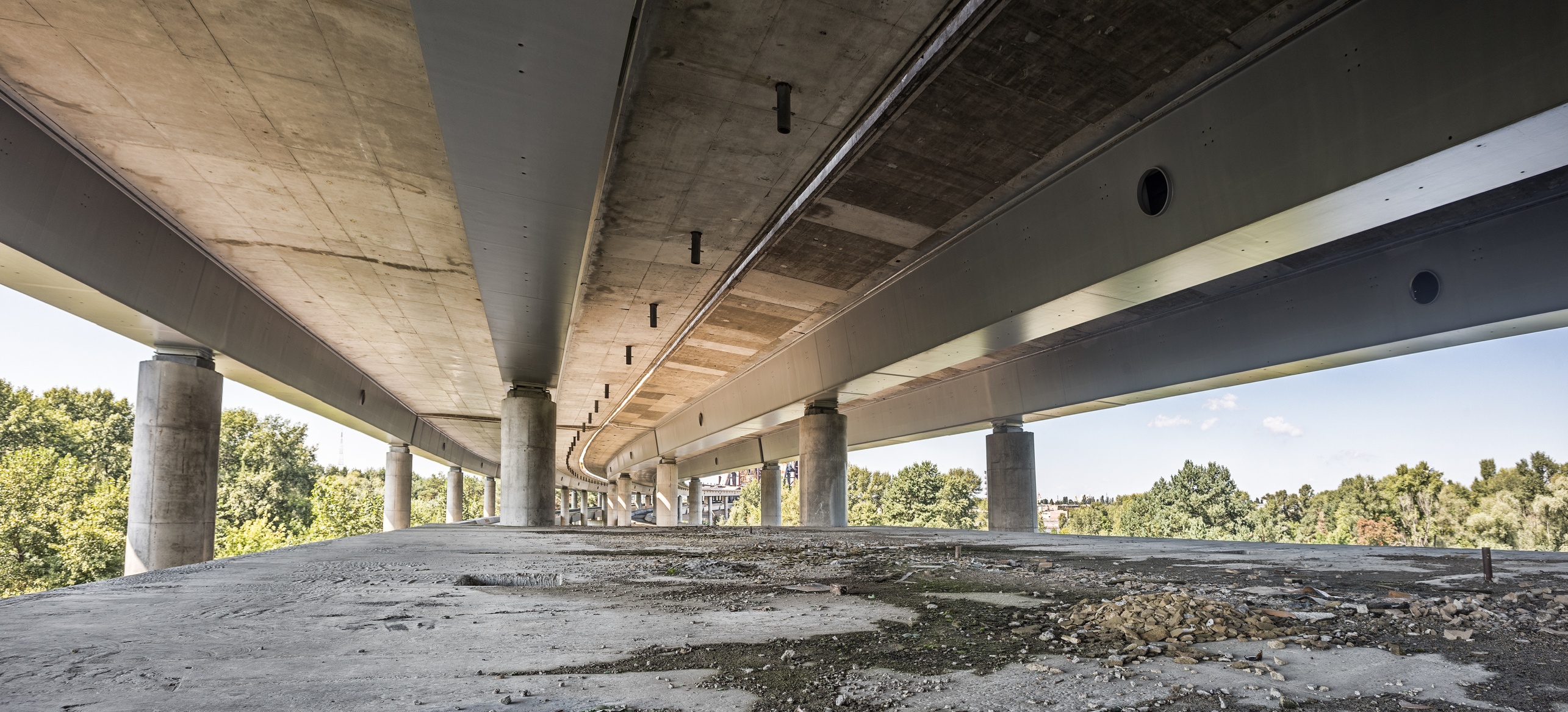
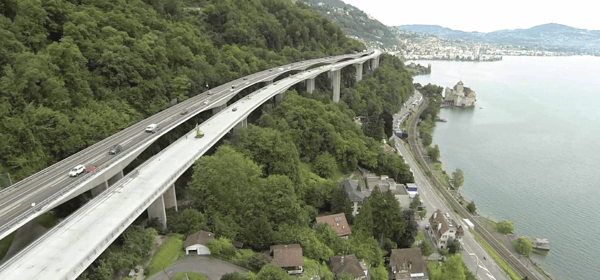 New bridges are constructed with the life expectancy of 75 years but normal wear and tear cuts that lifespan by about 30 years. In particular, decks deteriorate at a faster rate than other parts of the bridge due to direct impact from traffic, weather, and application of chemicals (e.g., de-icing chemicals). The stressor of elements, chlorides, and brines attacks metals which causes the steel to corrode. As a result, concrete tends to crack. What may start off as a microfracture expands over time, widening the cracks over time.
New bridges are constructed with the life expectancy of 75 years but normal wear and tear cuts that lifespan by about 30 years. In particular, decks deteriorate at a faster rate than other parts of the bridge due to direct impact from traffic, weather, and application of chemicals (e.g., de-icing chemicals). The stressor of elements, chlorides, and brines attacks metals which causes the steel to corrode. As a result, concrete tends to crack. What may start off as a microfracture expands over time, widening the cracks over time.
The ASCE grades US infrastructure on the basis of eight critical elements:
While states receive their own infrastructure grades, the 2017 national grade for US bridges is a C+. Investments in fixing bridges have increased over time, however, it is estimated that $2.42 billion are needed to properly fund these much-needed improvements. The industry is in dire need of innovative solutions to solve its infrastructure demands.
Bridge structures undergo preventative maintenance, or preservation, when there are no significant issues and little to no repairs. However, bridges with substantial needs may need to be rehabilitated or replaced. Replacing or rebuilding a bridge is the most expensive method, but may need to occur if a bridge has been neglected or significantly impacted by forces. Traffic is typically restricted or closed while the structure undergoes repairs.
In contrast, rehabilitation is an effective repair technique that balances the costs of repairs while remaining in operation for traffic use. Rehabilitation is typically preferred as long as the final product provides safe and adequate service to the public.
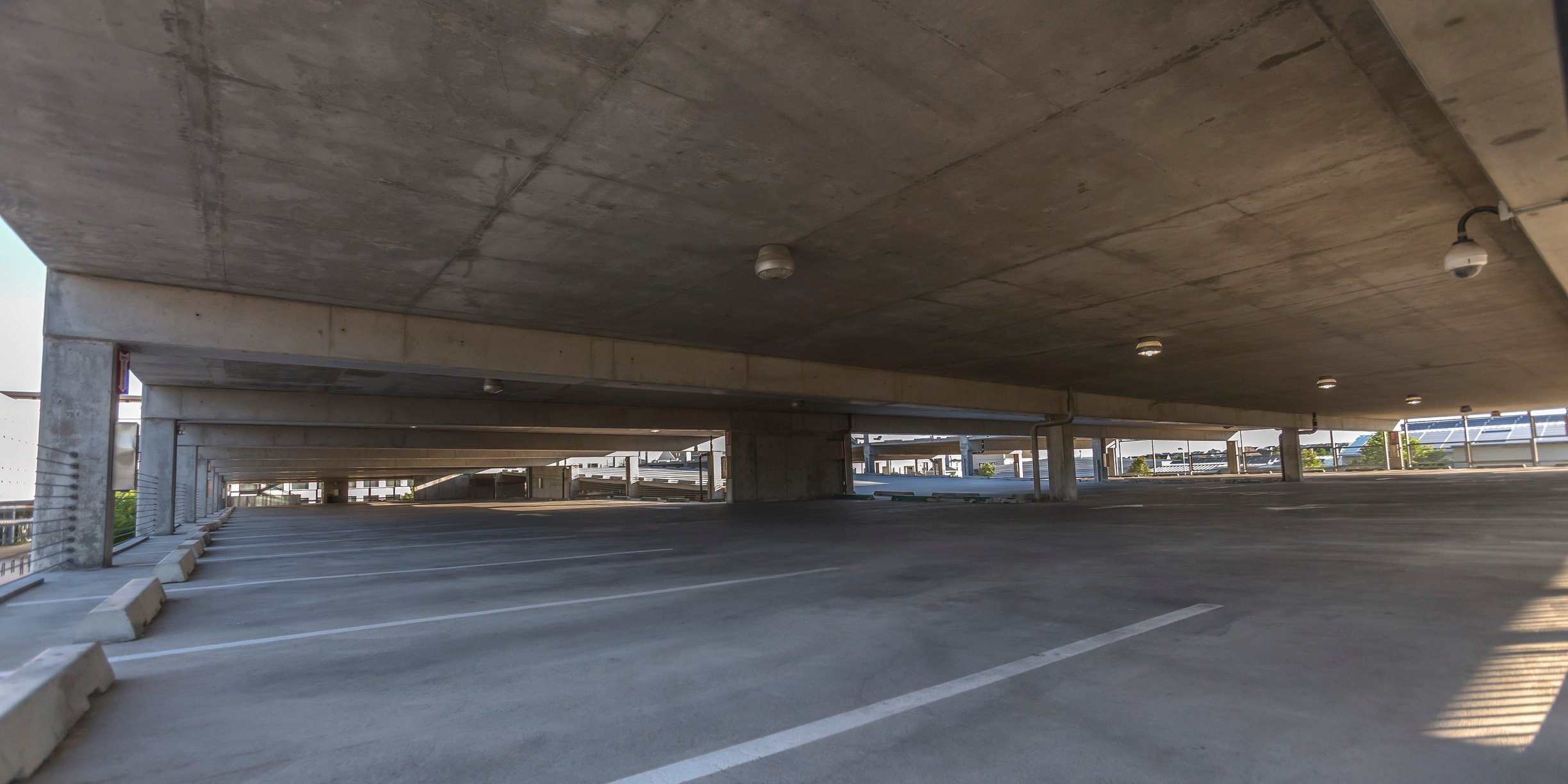
Structure rehabilitation is often the subject of funding constraints, therefore it’s important to consider estimated costs from labor to the materials used in the project. Additional considerations include the cost of repeated maintenance and traffic control. DOT teams will need to thoroughly evaluate the effects on return on investment and lifecycle cost for rehabilitation. Furthermore, individual states differ in funding processes. Some funding procurement processes may take as long as five years.
Before deciding on a repair technique, engineering teams should consider whether the bridge’s load carrying capacity is safe to carry the present and projected loads. Traffic projections, as well as capacity and route designations, are essential data points to review.
Damage to girders is a concern when rehabilitating a bridge. The careless use of jackhammers and saw blades during deck removal can cut through steel girders.
The effects of traffic on concrete may affect the quality and bond between concrete and rebar. The impact of traffic-induced vibrations can be reduced by maintaining a smooth structure approach and riding surface. It is often suggested that traffic be prohibited to adjacent lanes while the new deck concrete or overlay sets. This may cause heavy traffic while construction takes place.
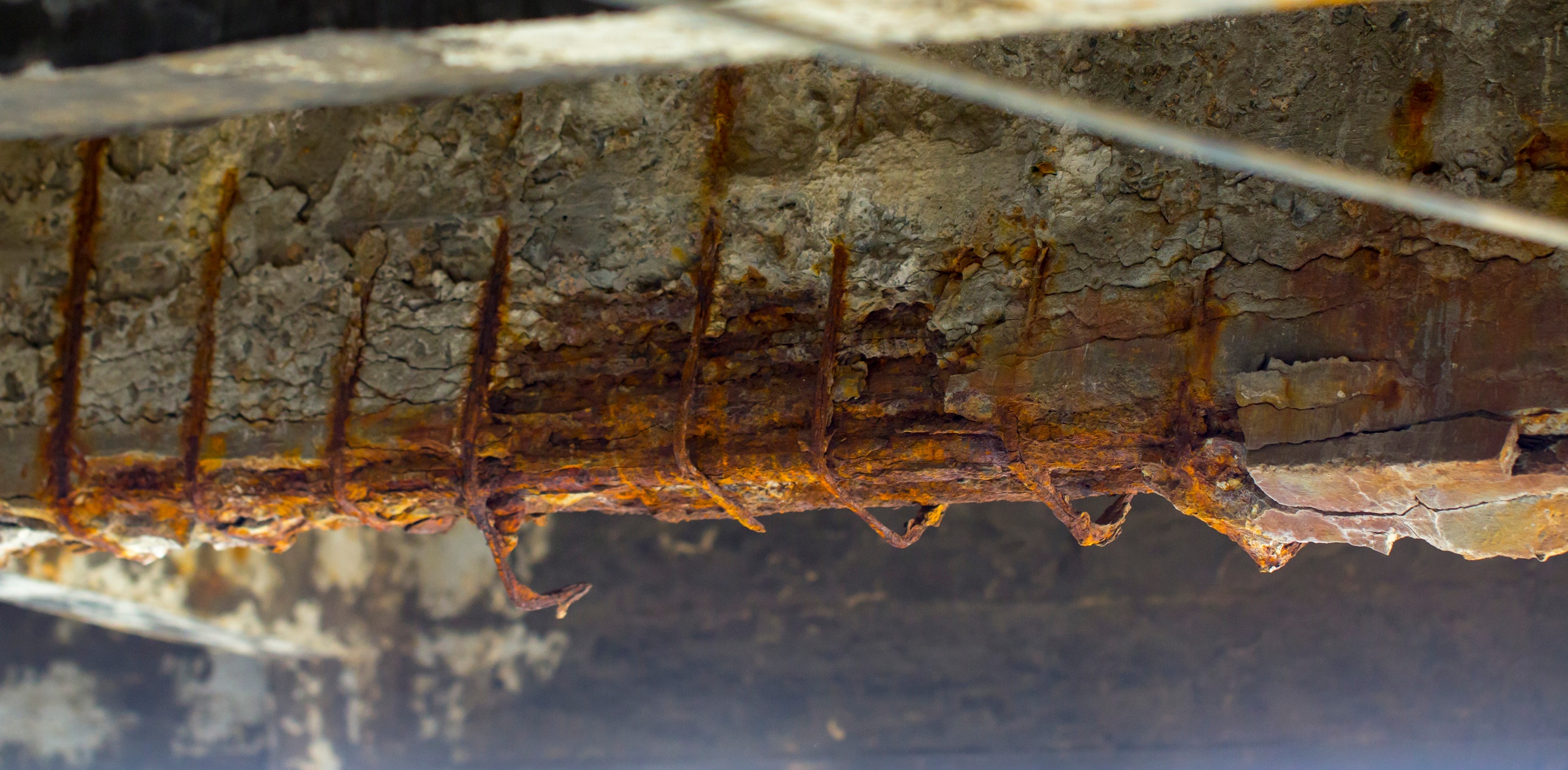
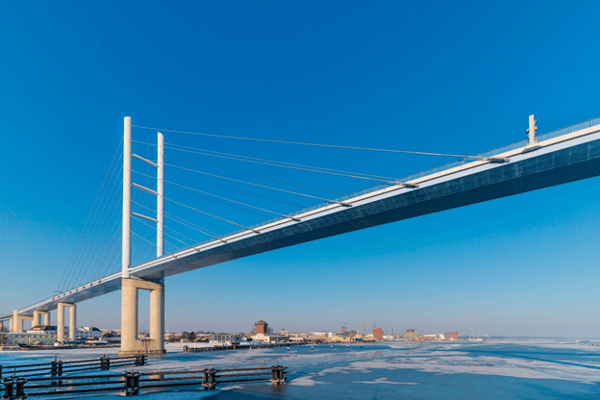 Existing bridges are commonly assessed by bridge rating through structural analysis. Load testing is also frequently used. The American Association of State Highway and Transportation Officials (AASHTO) describes the customary rating process, and adds that ratings can be determined through allowable stress (AS) or load factor (LF) methods, as well as the commonly used Load and Resistance Factor Design (LRFD) method.
Existing bridges are commonly assessed by bridge rating through structural analysis. Load testing is also frequently used. The American Association of State Highway and Transportation Officials (AASHTO) describes the customary rating process, and adds that ratings can be determined through allowable stress (AS) or load factor (LF) methods, as well as the commonly used Load and Resistance Factor Design (LRFD) method.
Specifically for deck assessment, while deck age is helpful in determining eligibility of an overlay, it should not be the only parameter a team looks at when considering rehabilitation. Additional factors such as deck materials, traffic demands, exposure to chemicals, and construction quality should be taken into consideration.
Visual and audible inspections, as well as infrared thermography (IR), are commonly-used assessment tools that detect delaminations and faulty concrete. Audible inspections consist of either “chain dragging” or “hammer sounding”, and inspector experience is essential to differentiate the sound of impacted concrete versus non-impacted concrete. In contrast, IR uses an infrared scanner and control video camera to measure the temperature differences between delaminated and non-delaminated concrete areas.
Various other deck assessment techniques include ground penetrating radar (GPR), deck cores, half-cell potential testing, and chloride ion testing. GPR uses electromagnetic signals to detect dielectric differences. Deck cores are used to determine concrete strength and chloride content. Cores may also be used to measure overlay thickness and concrete cover. Both half-cell potential testing and chloride ion testing assess the active corrosion of reinforcing steel in concrete. For chloride ion testing, chloride profiles should be developed to assess the imminent susceptibility of corrosion.

Factors such as the type of structure, area in need of repair, existing condition, and cost guide a team to decide on the method of rehabilitation. Bridge rehabilitation services take place in three main areas: Substructure, superstructure, and the bridge deck.
Frequently, expansion joints need to be repaired or replaced first to extend the lifespan of a bridge. If left unattended to, failing joints can result in additional damage to the bridge substructure and increased spalling.
Steel rehabilitation and repairs consist of heat straightening of bridge girders and members if a bridge attains impact damage. Welding repairs, bridge bearing replacement and resetting, as well as emergency structural repairs and mitigation may be necessary depending on the assessment and diagnosis. Additional steel repair methods include: bridge structural member removal and replacement, structural rehabilitation, and strengthening. For more information, MDOT provides a comprehensive reference on cleaning and coating of structural steel.
Loss of bearing capacity occurs when footings and pilings become exposed upon erosion, scour, and other damaging processes like the cycle of wetting and drying. Deteriorating concrete on a bridge’s pier and abutment should be assessed to determine if the concrete is sound or if rehabilitation of the substructure is needed. In addition, when structures are built on water steel pilings should be examined below the water line or splash zone as corrosion is an issue. Substructures made of timber are prone to fungus decay, vermin, and typical wear and weathering as well so these substructures should be assessed regularly to establish functionality.
Inspection of a bridge’s superstructure detects damage to girders, concrete, and prestressed strands. It is also necessary to determine structural integrity and traffic restrictions if needed. It may be necessary to replace the superstructure with a concrete slab if girder spacings are less than ideal or if the bridge requires extensive redecking. Bridges will likely need to be evaluated against (and meet) LRFD criteria.
Deck widening can support the rehabilitation of a structure if the existing deck is adequate (structurally sound) and if the existing width is more than half of the total new width. The existing deck should be replaced if more than 20% is spalled or delaminated. Strengthening techniques include concrete jacketing, steel plate, external post-tensioning, or fibre-reinforced polymer (FRP) bonding on the bridge’s external surface and pre-stressed concrete structures.
Microfractures and cracks in concrete are unavoidable. However, case studies have shown that the use of protective surface treatments improves resistance to chemical applications and extends the overall service life of a bridge.
The use of overlay may be warranted when the deck and superstructure are structurally sound and when it’s capable to carry overlay dead load. Deck overlay is cost-effective when facing funding constraints, though teams will need to consider the anticipated service life and if any additional substantial repairs will need to be made in the near future.
The application of overlays limits the infiltration of deicing chemicals and weather elements. There are several overlay methods that are used in preservation and rehabilitation. Before the application of an overlay, the bridge deck must be prepared for proper bonding. Preparation commonly consists of sand blasting, milling, or hydrodemolition. However, the intensity of deck preparation will depend on the existing condition and structural needs. Besides concrete removal, deck patches and surface removal, as well as surface preparation, may need to occur.
A thickness of the overlay is 2” minimum. The addition of polymer in the overlay allows resistance against water and chlorides. Aggregate significantly affects the permeability of polymer modified concrete. This overlay option is expensive and tends to add limited service life in comparison to other methods. However, it provides minimal traffic disruptions and is good to use on flexible structures (e.g., timber slabs).
Provides a long-lasting system with reduced traffic disruptions. This method is often used in the presence of hydrodemolition. However, some DOTs are hesitant to use latex-modified overlays as delamination has been observed.
There are two options for using reinforced concrete overlays. Thin overlays range around <4 ½” while thick overlays are > 4 ½”. Thin overlays use fiber reinforcement for controlling further cracking. Thick overlays typically use steel reinforcements or rebar.
Traffic breaks up traditional deck overlays, causing them to delaminate from the concrete. Many traditional deck overlays have short lifespans, sometimes as little as one year, despite estimating a span of five years. Budgetary constraints and the impact on traffic brings a need for new materials. UHPC is a highly-effective alternative to traditional overlays. UHPC is applied in a thin layer but lasts significantly longer than other overlay applications. This is the result of superior surface bonding, adding decades to a bridge’s lifespan.
